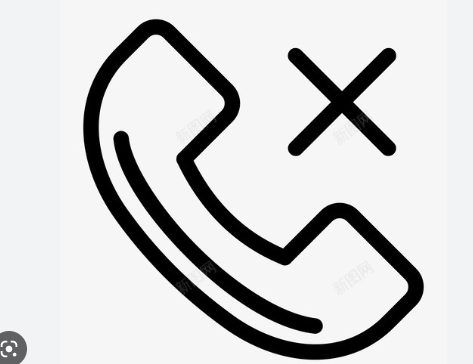How to Boost Phone Signal?

The ownership of cell phones has increased significantly over the years, with over 80% of the global population now utilizing them. However, the technology required to provide a strong and reliable cell phone signal has not kept pace with this growth. Despite this, there are various methods available that can be utilized to improve a cell phone signal, especially now that technology has advanced.
There are several causes of poor cell phone signal, including the distance from the nearest cell tower, blockage from buildings or natural obstacles such as hills, and interference from other electronic devices. Fortunately, there are ways to improve cell phone signals despite these challenges.
One of the most commonly used methods involves using a signal booster. This is a device that amplifies the signal and transmits it to a larger area, resulting in better reception. Other methods include using Wi-Fi calling or switching to a different network provider that provides better coverage in your area.
Another technique that can be used to boost a cell phone signal is by removing any obstacles that may be blocking the signal such as trees, tall buildings, or metal objects. Additionally, moving to a higher elevation or an open area can also help to improve the signal strength.
7 ways to increase reception:

1. Mobile phone signal boosters
If you don’t want to change networks and can’t rely on Wi-Fi calling, then a signal booster could help.
While they can certainly help, they can be expensive and there are strict laws governing their use. As you’ll find on Ofcom’s website, many signal boosters are illegal to use.
You can approach your mobile provider and ask if they will supply (or sell you) a booster/repeater, but of the four main UK networks, only O2 now offers a signal booster, the Boostbox. The others will direct you to Wi-Fi calling.
Signal boosters do what they say: amplify an existing weak signal and make it a bit better. If you are keen to get one and happy to spend between £500 and £1500, then be sure to get one that is labeled as OFCOM Licence Exempt
2.Use Wi-Fi instead
Most UK households have fast enough broadband for Wi-Fi calling. There’s really no difference between making a regular phone call to calling someone on WhatsApp, Zoom, Skype or another app.
In fact, some mobile operators even have a service called ‘WiFi calling’.
Instead of using the mobile phone network‘s 3G, 4G or 5G signal, you can use a Wi-Fi network, such as your home broadband, to call people on WhatsApp or a different app.
You can check if your mobile provider offers WiFi calling, but it’s also important that your phone supports it too. If one or both turn out to be incompatible, then just use WhatsApp instead, or whichever app the recipient of you call uses.
Chances are that the person you want to call already has WhatsApp or Zoom, but if not, it’s quick and easy to install the app and make a free account.

There are, of course, plenty of alternatives to these, including Skype, Facebook Messenger, Viber, Google Duo and Apple FaceTime. All these services allow you to voice or video call using a WiFi connection, so if you’re already chatting with someone using one of those services, you can also call them over Wi-Fi from within your app of choice.
3. Try holding your phone in different positions
Before you spend a lot of money on devices such as a signal boosters, make sure your phone case isn’t the issue, or that – as Steve Jobs famously once said – you’re holding your phone wrong.
Long before modern smartphones, some mobile phones had an aerial poking out of the top.
These days, those antennae are hidden inside because buyers wouldn’t have it any other way. Putting a case on your phone (particularly a metal one) can seriously affect the signal it’s able to receive.

So, take off your phone’s case and even try enabling the speakerphone mode so you’re not touching the phone at all. If this doesn’t help, also try making a call in the highest room in your home.
You could also find out where your nearest mobile tower is located. These tall poles are where mobile operators place their transmitters, and it can help improve signal if you go outside and face the direction of the tower.
4.. Change to another mobile network
Just because you have poor (or zero) mobile signal from your current provider, you may find that another network offers much better service in your area.

It’s surprisingly easy to switch (you can now text to switch networks) and keeping your existing phone number is easy too, so it’s not nearly as extreme as it sounds.
In order to find out if a different network will provide a better mobile signal, you can use their respective coverage checkers. Each will tell you whether the signal will be good outdoors as well as indoors at any given UK postcode.
5. Make your own mobile network
Depending on your needs, one final (and slightly unorthodox) option is the goTenna Mesh. These portable devices are designed primarily for hiking but will work anywhere with poor signal, and let you create a mini mesh network to communicate.
Sold in packs of two, four or eight, you simply pair each goTenna to a phone over Bluetooth and can then send encrypted messages (though not voice calls) between devices, as long as they’re in range – up to four miles in open terrain, and half a mile or so in busier urban environments. You can also use the devices to create a relay, extending the range with each one.
6.Always keep the phone battery level above 2 bars.
A mobile phone consumes more power when connected to a call than when it is idle. Oftentimes, the battery may be good enough to make a call, but not necessarily enough to search for a signal. If you find that your cell phone signal is poor, consider how you can improve your signal.

7.Try going outside or near a window to make and receive calls instead of deep in the building.
Buildings and other large objects can block cell phone signals. If you don’t have a signal on the street, try walking to the nearest intersection, where coverage may be slightly stronger. Cellular band radio waves do not penetrate the ground, so if you are working underground, you will most likely not have a signal. Also, try downloading a signal map tool on your smartphone. Usually, these tools can point the user in the direction of the cell towers closest to their location, so they can effectively help you find areas with better signal coverage.








